Popular music is by definition music that is disseminated widely. As such, it has been particularly significant with the twentieth-century proliferation of recording technologies and mass media. Sometimes we may forget that it was not until the 1920s that recording and playback technology allowed for the spread of music through records. To become popular before that time, a tune had to be spread by word of mouth, by traveling performers, and by music notation, which might appear in a music magazine or newspaper or in sheet music that could be bought at general stores, catalogs, and music stores.
Today the success of a popular music artist is most often measured by how many songs they sell. In the past, that meant record and CD sales, but today it essentially means numbers of downloads. Recording industry executives determine which artists to record and distribute based almost entirely on their perceived abil-ity to sell units. Most popular music today is sold by downloading it to an electronic device, though CDs are still manufactured and distributed.
Popular music is also often thought of as ephemeral, that is, as remaining in the consciousness of a group of people for a limited time. For this chapter, we have chosen popular music that has either transcended that boundary or that was so important in or exemplary of its time and place that its discussion helps us understand music, history, and culture more broadly. It is, however, but a sampling of a huge body of popular music that exists in the United States since roughly the Colonial period. As you listen to these examples, perhaps you can think of similar examples of popular music that you know.
As music with the power to connect with large groups of people, popular music has sometimes been censored. In Colonial times, popular (pop) music was discouraged and, often, even illegal. Later, after church leaders began to lose some of their political power, with the separation of church and state, composers began to write popular music intended for singing at home by amateurs with some instrumental accompaniment. One popular political song of the 1700s was "Chester" by William Billings.
William Billings – "Chester"
"Chester" by William Billings — YouTubeThe birth and early development of Ragtime, New Orleans Jazz (Dixieland), and the Blues are all critical to the creation and growth of the popular music we enjoy today. The rhythm, melody, harmony, and instrumentation of all three styles were foundational to the big band, jazz, bebop, and rock and roll styles that followed.
The syncopated rhythms and the importance of a steady dance-like beat in ragtime, and the styles that followed originated in the African cultures accompanying the slaves brought to the American South. The use of scales, chords, and the rules of Western harmony—as well as the use of orchestral instruments like clarinets, saxophones, trumpets, trombones, tubas, pianos, and snare and bass drums—were all borrowed from the Western European tradition. The combination of these different musical cultures occurred almost exclusively in New Orleans, a city that included French, Spanish, English, Creole (Native American), and African populations in an environment that was unusually cooperative and open-minded for the late 1800s and early 1900s.
We must remember that most musical styles do not disappear when new styles evolve; they just fade in popularity. Ragtime, New Orleans jazz, and the Blues are still performed today—not only in New Orleans and St. Louis, but also across the United States, in Europe, and even parts of Asia.
One important point to realize is that most popular music from the 1890s on is heavily influenced by the dominance of syncopation. Syncopation is the act of disrupting the normal pattern of accents in a piece of music by emphasizing what would normally be weak beats. For instance, in a march in quadruple meter, the musicians would typically emphasize beats one and three. However, in Ragtime, the em-phasis would be placed on beats two and four (or the "upbeats"). We attribute this practice largely to the music and culture of the Africans who were sold into slavery in the American South. Syncopation and the emphasis on beats two and four permeate ragtime, Dixieland jazz, the blues, and most of the rock music that follows these styles.
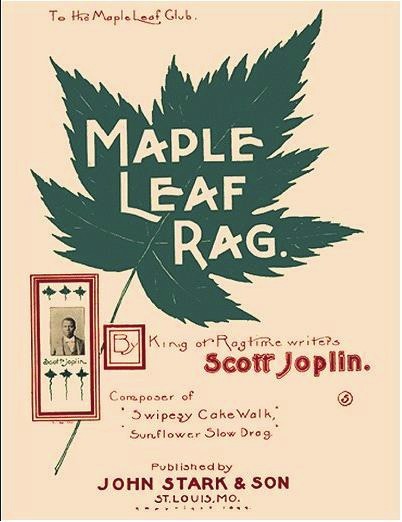 Figure 8.1 | Second edition cover of Maple Leaf Rag
Author | Scott Joplin
Source | Wikimedia Commons
License | Public Domain
Figure 8.1 | Second edition cover of Maple Leaf Rag
Author | Scott Joplin
Source | Wikimedia Commons
License | Public Domain
The style of piano playing known as "ragtime" greatly influenced the development of American popular music. Indeed, all of our popular music styles grew out of ragtime and its New Orleans based cousin, jazz. Before the establishment of the recording industry, musicians supplied all live musical entertainment and background music. Music for these musicians to play was published in its written form for piano and other non-electric instruments.
Ragtime was first published as written piano sheet music in the 1890s; by the early 1900s, it had almost taken over the music publishing industry. In fact, ragtime was so popular that it even increased the sale of pianos and energized the early music recording industry.
After the Civil War much of the Midwest, particularly Missouri, sported numerous saloons, dance halls, and brothels. These establishments offered work to piano players because of the need for live music—remember there was no recorded music industry at that time. Many African American businessmen at this time came to enjoy financial success in a section of St. Louis called Chestnut Valley, one such man being John L. Turpin from Savannah who moved to St. Louis and opened the Silver Dollar saloon. Ten years later, in 1897, Turpin's son, a self-taught pianist, published "Harlem Rag," a defining piece of piano Ragtime and a model for future composers. That same year, W. H. Krell published "Mississippi Rag."
One of the most important ragtime composers, Scott Joplin was born sometime late 1867 and early 1868, probably in the northern part of Texas. Although most of the details of his early life are uncertain, his name appears in the 1880 census, listing him as twelve years of age. His father was a former slave and his mother worked in the home of a well to do white family in Texarkana. Scholars believe that Joplin probably had access to a piano in the home of his mother's employer and began at that time to learn the rudiments of music. While in Texarkana, Joplin's ability gained notice, and he began to study with Julius Weiss, a German-born music teacher. Scott later attended high school in Sedalia, Missouri then alternated between Texarkana, where in 1891 he was performing with a minstrel show, and Sedalia, where for several years he continued to perfect his compositional technique. In 1899, he convinced Civil War veteran, music lover, and music store owner John Stark to publish "Maple Leaf Rag"— a piece destined to become the most popular ragtime composition. By 1914, it had sold over 1 million copies.
Click on the links below to listen to Cory Hall perform two of Scott Joplin's better known compositions, "Maple Leaf Rag" and "The Entertainer." Pay attention to the steady beat of the music and then notice that many of the accented notes are not on the beat. Those are the syncopated notes, and they are what make the time sound "ragged." In the late 1800s and early 1900s, musicians often called music that was written with different beat patterns by the name of the purpose for which it was composed. For example, music written for dancing that was grouped in three beats per measure was called "waltz-time," and music written in two beats per measure for marching was called "march-time." So it seems reasonable that music written with many notes off the beat, or syncopated, would be called "ragged-time" or "ragtime."
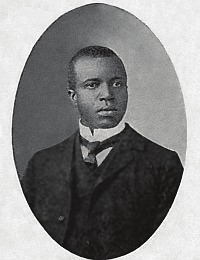
Figure 8.2 | Scott Joplin
Author | Unknown
Source | Wikimedia Commons
License | Public Domain
Listen to the Maple Leaf Rag – Scott Joplin
The Entertainer – Scott Joplin
Arthur Pryor was the most famous trombone soloist of his era and a member of the world renowned band of John Philip Sousa. Prior was born in Missouri and wrote numerous successful ragtime compositions. When the Sousa Band toured Europe in 1900, Arthur Pryor's ragtime compositions did much to spread the fame of ragtime to Europe.
By the early 1900s, ragtime enjoyed tremendous popularity and could be found in many different forms, including the early example of mass-produced recorded music, the phonograph record. Listen to the following phonograph recording of the Sousa Band from 1906.
Listen to the Sousa Band, "Arkansaw Huskin' Bee"
The syncopated feel of ragtime encourages a feeling of movement—perhaps a desire to tap your foot, or bob your head, or dance. Many older people perceived this feeling as a threat that would lead young people down the road to sin and deg-radation; they associated the music with saloons, dance halls, and bordellos. Need-less to say, they didn't approve! We will later see many similar warnings about the rock music of the 1960s.
You may have also noticed that "Maple Leaf Rag" and "The Entertainer" comprise sections that repeat. These three or four repeated sections make up the "form" of the vast majority of ragtime compositions. Music of all styles can either be built of sections that repeat (a repeating form), or be written in a way that does not repeat (through-composed). We will talk more about form later.
The term "the blues" may have originated in two possible ways. The first possibility is that as early as the 1790s the term "blue devils" was used to refer to feelings of suffering and sadness. The term first appeared in print in Hart Wand's piece, "Dallas Blues" (1912), the first copyrighted blues composition. The second possibility suggests it derives from the mysticism associated with many West African cultures that used the Blue Indigo plant to dye the garments of those who were in mourning after the death of a loved one. The indigo plant was grown on many Southern plantations, and its use could have strengthened the slaves' connecting "blue" indigo with suffering.
Whatever the source, the term "the blues" became universally associated with a style of music that at the turn of the twentieth century began to form out of African American work songs, field hollers, and spirituals. Today, the word "blues" is used loosely and can mean several different things, like feeling sad or down. It can also describe any song played in a bluesy style.

Figure 8.3 | Robert Johnson
Author | User "Anetode"
Source | Wikipedia
License | Fair Use
In musical circles, the term "blues" most commonly describes a song that follows a blues form, which is a twelve-bar strophic song form. This musical structure of the blues has influenced the development of jazz, rock, techno, and other popular styles of music and is based on a few basic and recurring compositional and performance techniques. The form of the blues is repeating. It is usually eight, twelve, or sixteen bars in length, although some pieces vary this somewhat, and those sections are repeated several times. The blues uses a limited number of chords, usually three or four. Specific notes within these chords are often lowered (the third, fifth, and seventh notes above the root of the chord), and the scales associated with these "blue note" alterations are called "blues scales." Musicians often "bend" the pitch of these notes to give them their bluesy quality.
Over the years, the blues has found its way into many different styles of popular music. First, listen to two examples of traditional blues selections: Robert Johnson performs "Cross Road Blues," and B. B. King performs "How Blue Can You Get."
Robert Johnson – "Cross Road Blues"
B.B. King — "How Blue Can You Get"
Next listen to Stevie Ray Vaughn perform a number of blues selections that use rock as the rhythmic basis, including a composition by Jimi Hendrix.
More than any other musical style, the blues is the foundation of all American music. It appears in virtually every other native musical style, including jazz, rock, rhythm and blues, and hip hop.
New Orleans has, for centuries, been a city of many different cultural and ethnic groups. French, Spanish, Italian, German, and Irish immigrants all settled there before and during the 1800s, and it is in this city where their musical styles mixed with the different musical influences infused by the de-scendants of African slaves.
New Orleans jazz has its roots in Storyville, an area of New Orleans (NO-LA) known for its bars, dance halls, and brothels—like Missouri's Chestnut Valley. In the early part of the 1900s, African American musical styles such as ragtime, blues, spirituals, and marches merged together to create a unique art form. Although jazz borrows much of its harmony and instrumentation from Europe, it differs fundamentally from Europe-an styles in its rhythmic makeup. Jazz emphasized syncopation and swing. Swing is a term used to describe the rhythmic bounce that characterizes the jazz style.
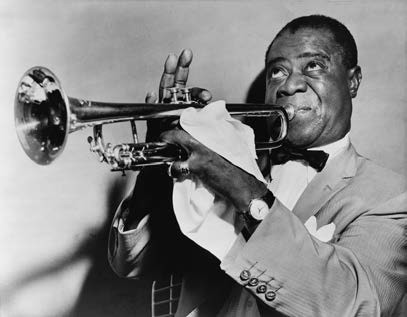
Figure 8.4 | Louis Armstrong
Author | World-Telegram Staff
Source | Wikimedia Commons
License | Public Domain
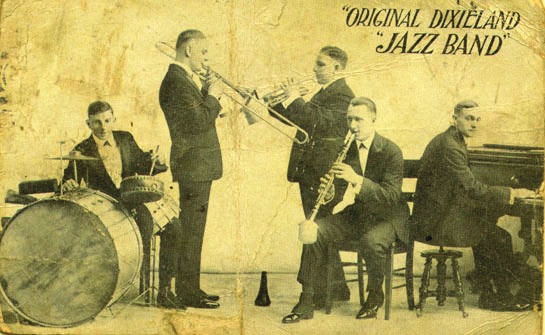
One of the most important aspects of the jazz style is that it often depends on performers being able to improvise. Improvisation is the act of creating melodies and harmonies on the spot without reading the music off a page. The blending of written and improvised performance has become an integral part of jazz performance and has continued in the later evolution of rock and other popular styles. Early jazz musicians learned to improvise entire new melodies over the chord structures of existing tunes.
Unlike with ragtime, which is largely a piano performance style, jazz musicians often provided music for dancing. By the early 1900s, dance music group instrumentation had changed from mostly string orchestras to jazz bands using instruments borrowed from marching bands; the band instruments were louder and more suited to noisy dance halls. Different combinations of trumpets, clarinets, saxophones, trombones, and tubas joined with drums, piano, guitar, and banjo to form the common jazz band instrumentation. However, piano players often traveled from city to city looking for work and it is easy to see how the music of these popular ragtime pianists influenced early jazz development in NOLA.
In 1917, Storyville was closed down due to the efforts of reli-gious leaders in NOLA, so jazz musicians were forced to move to Chicago, New York, Los Ange-les, Memphis, St. Louis, and other big cities to find work. Around this same time, the recording in-dustry began to flourish, partic-ularly in Chicago and New York. Soon groups like the Original Dixieland Jazz Band began recording New Orleans style jazz. Jazz eventually became part of a performing and recording revolution that swept the country (and Western world) and changed popular music and culture forever.
Figure 8.5 | Original Dixieland Jazz Band
Author | Unknown
Source | Wikimedia Commons
License | Public Domain
Charles "Buddy" Bolden is widely recognized as the first major figure in the early development of jazz in NOLA. Bolden, like most of the other top jazz performers at that time, was of African descent, a fact which points to the central importance of African Americans to the development of New Orleans jazz and later American popular music from this point forward. Unfortunately, no known recordings of Bolden exist. The Original Dixieland Jazz Band, an ensemble comprised of white musicians, is widely considered to have made the first recording of jazz. This recording sold over one million copies in the first six months of its release and did much to associate New Orleans with "jazz" in the new recording industry. Phono-graph records soon replaced sheet music as a favorite way to experience new music because records allowed the listener to hear the subtle jazz performance practices that could not be accurately put down on paper.
Listen to the Original Dixieland Jazz Band's recording of "Livery Stable Blues," which was recorded in New York in 1917, linked below.
Listen to Original Dixieland Jazz Band – "Livery Stable Blues"
This early style of jazz, now known as New Orleans Jazz, or " Dixieland," is based almost entirely on the tradition of improvisation. The mature Dixieland style was in full swing by the 1920s and included syncopated rhythms, improvised solos and harmonies, as well as a common instrumentation that included trumpet, clari-net, saxophone, trombone, tuba, banjo, piano, guitar, and drums. The form of most Dixieland tunes, like almost all popular music, was based on repeated sections.
The late 1920s saw the rise of a New Orleans native who transformed jazz from a somewhat loose style with many parts being improvised at the same time, into a style that featured soloists taking turns playing improvised solos. Louis Armstrong, whose nickname was "Satchmo," became an international jazz superstar and movie and television personality in a career that stretched from the 1920s to the 1960s.
Armstrong was born in 1901 in a section of New Orleans with a violent reputation, so much so that it was called "The Battlefield." At the age of 11, Armstrong was arrested for firing a gun in the air to celebrate the New Year and was subsequently sent to the Colored Waif's Home for Boys. It was here that Armstrong learned to play the cornet (an early version of the trumpet). He quickly realized his aptitude for music and, upon being released two years later, soon began to build a reputation as one of the best trumpet players in New Orleans, performing everywhere from the seedy bars of Storyville to the riverboats that traveled up and down the Mississippi River.
Armstrong eventually moved to Chicago to join the band of his old mentor, Joe "King" Oliver. From 1925 to 1928, Armstrong made a series of recordings as a leader known as the "Hot Fives" and "Hot Sevens" that would cement his status as one of the most important jazz artists of the twentieth century. His innovations include the following: he established jazz as a solo art form firmly rooted in the blues and which celebrated individual expression; he introduced a jazz singing style, which included a loose phrasing style; he defined the new rhythmic feel of jazz known as swing; and he expanded the possibilities of the trumpet through bends and other techniques that allowed him to mimic the human voice.
Listen to "West End Blues" recorded by Louis Armstrong, America's first popular music superstar, in Chicago in 1928 (linked below.) In addition to common Dixieland instrumentation and improvised solos, this selection also contains a vocal solo by Louis Armstrong using a technique called "scat singing." Scat singing occurs when a vocalist improvises a melody using seemingly nonsense syllables, often in an attempt to imitate the style of a wind instrument.
Listening Guide
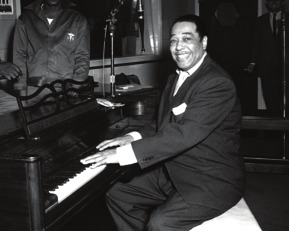 2:34
Full band.Improvised trumpet solo supported by full band.
2:57
Full band.Piano followed by trumpet.
2:34
Full band.Improvised trumpet solo supported by full band.
2:57
Full band.Piano followed by trumpet.
No unit on New Orleans jazz would be complete without mentioning the Marsalis family. Father Ellis (piano) and sons Branford (saxophone), Wynton (trumpet), Delfeayo (trombone), and Jason (drums) are all artists of the first rate and world-renowned as individual jazz musicians. Listen to the Marsalis family contin-ue the New Orleans jazz tradition as they perform "Struttin' with Some Barbeque."
Struttin' With Some Barbeque
https://www.youtube.com/watch?v=gUnWt21HxMQBy the 1930s, jazz was the most popular music in the country. Most jazz ensembles at this time featured a large group of fifteen to twenty musicians. This increase in size was needed mainly because the larger venues used for dancing made it difficult to hear small combos over the noises in the room. Before long, the standard instrumentation of the performing dance band had become five saxophones, five trombones, five trumpets, a rhythm section (piano, bass, and drum set), and oftentimes one or more singers. The larger number of instruments made the normal improvised Dixieland parts impractical; fifteen musicians improvising at the same time just sounded like noise. Therefore, band leaders began to either arrange parts for the different sections (as Duke Ellington did) or hire arrangers to do it for them (as did Glenn Miller, Stan Kenton, and others). The standard big band instrumentation that resulted survives to this day.
Figure 8.6 | Duke Ellington
Author | Unknown
Source | Wikimedia Commons
License | Public Domain
Throughout the later 1930s, the 1940s, and to some extent the 1950s, big bands enjoyed enormous popularity performing both for dances and as concert performing groups. Today the terms dance band and big band are used interchangeably. During the heyday of big band popularity, a number of superstars rose with the tide. Many times the leaders of these bands became famous; Duke Ellington, Count Basie, Stan Kenton, Tommy Dorsey, and Glenn Miller were just a few that became household names. Listen to the traditional big band sound of Glenn Miller and his orchestra as they perform their number one hit "In the Mood."
Glenn Miller – "In the Mood"
https://www.youtube.com/watch?v=_CI-0E_jsesOne of the most important figures in the big band era was Duke Ellington, a bandleader and composer who created some of most unique and innovative sounding music of the era. Ellington sought out musicians with their own personal sounds to incorporate into his orchestra. Some famous musicians from the Ellington band include trumpeter Cootie Williams, who created interesting vocal effects with a plunger mute; Cat Anderson, who could hit high notes that most trumpeters thought im-possible, and alto saxophonist Johnny Hodges, a master at bending notes to create beautiful expressive melodies. Ellington was able write music that wove these unique playing styles together into a musical tapestry that was complex and dissonant, yet beautiful and accessible. Ellington wrote many big band hits of the 1930s and 1940s, such as the example below, "It Don't Mean A Thing If It Ain't Got That Swing."
Listening Guide
For audio, go to: https://www.youtube.com/watch?v=YbwDRdRXP3k Composer: Duke EllingtonComposition: It Don't Mean A Thing If It Ain't Got That SwingDate: 1931 (recorded 1932)Genre: Big Band JazzForm: AABANature of Text: an upbeat song celebrating swing musicPerforming Forces: Early Big Band Instrumentation: Arthur Whetsel, Freddie Jenkins, Cootie Williams – trumpet; Joe Nanton, Juan Tizol – trombone; Barney Bigard, Johnny Hodges, Harry Carney – woodwinds; Duke Ellington – piano, Fred Guy – banjo; Wellman Braud – bass; Sonny Greer – drums; Ivie Anderson – vocals What we want you to remember about this composition: • The original song follows a standard AABA form, which is repeated over and over. Much like the blues, each time through the form is called a "chorus." • Take a look at the words to the song below to follow along with the form. A It don't mean a thing, if it ain't got that swing (doo-ah, doo-ah, doo-ah, doo-ah, doo-ah, doo-ah, doo-ah, doo-ah) A It don't mean a thing, all you got to do is sing (doo-ah, doo-ah, doo-ah, doo-ah, doo-ah, doo-ah, doo-ah, doo-ah) B It makes no difference if it's sweet or hot Just give that rhythm everything you've got A It don't mean a thing, if it ain't got that swing (doo-ah, doo-ah, doo-ah, doo-ah, doo-ah, doo-ah, doo-ah, doo-ah) Page | 266 Other things to listen for: • In the A sections of the form, the brass players use standard toilet plungers on the bells of their horns to create a "wa, wa" sound Timing Performing Forces, Melody, Text and Form and Texture 0:00 Upright bass and vocals. Introduction Bluesy "scat singing" riff in vocals. 0:13 Trombone with rhythm section. First "chorus" of AABA form Improvised solos alternating with original melody. 0:47 Full Band. Second chorus of AABA form Main melody which includes a call and response between vocalist and horns. 1:23 Alto sax solo over horn backgrounds. InterludeImprovised solo. 1:58 Alto sax solo. First two A sections of third Improvised solo. chorus 2:07 Sax section. B section of third chorus New melodic material written in a soloistic manner. 2:16 Alto sax solo over horn backgrounds. Last A section of third chorusImprovised solo. 2:25 Full Band (Shout Chorus). First two A sections of fourth New melodic material written in a chorus soloistic manner. 2:42 Vocalist with rhythm section. B section of fourth chorus Improvised "scat" solo. 2:52 Full Band. Last A section of fourth chorus Main melody which includes a call and response between vocalist and horns.Stan Kenton was an innovative big band leader who liked to incorporate music from other cultures into his repertoire. Listen to the Latin influence in his re-cording of "Malaga."
Stan Kenton – "Malaga"
https://www.youtube.com/watch?v=HEt13RIL0ko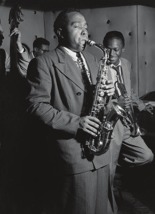
This recording of the Count Basie band is a great example of the traditional swing style of jazz in a contemporary arrangement of "Sweet Georgia Brown."
Count Basie – "Sweet Georgia Brown"
https://www.youtube.com/watch?v=EbbBeU1vHewNumerous vocalists also became stars in the Big Band movement. One of the most famous also became a movie star: Frank Sinatra.
Frank Sinatra – "New York, New York"
https://www.youtube.com/watch?v=odNmQiSC6dYElla Fitzgerald became world famous as a jazz vocalist and recording artist, and enjoyed a long and illustrious career as one of the leading jazz recording artists of all time.
Ella Fitzgerald – "The Lady Is a Tramp"
https://www.youtube.com/watch?v=k9mssKqk6YEThe big band tradition continues to this day with vocal artists such as Michael Bublé recording and performing live concerts. Here Michael Bublé performs his hit "Moon Dance."
Michael Bublé — "Moon Dance"
https://www.youtube.com/watch?v=PBCJWJXeFzkIn the early 1940s, World War II had put a serious damper on saloons and dance halls due to rationing, lower incomes, and the drafting of a large number of musicians. It was difficult for bandleaders to hire enough good players because many musicians had gone to war. Consequently, many musicians began to form smaller jazz ensembles consisting of a few wind instruments and a rhythm section. These ensembles are often called jazz "combos."
Figure 8.7 | Charlie Parker, Tommy Potter, Miles Davis, Dizzy Gillespie and Max Roach, Three Deuces, New York, N.Y.
Author | William P. Gottlieb
Source | Wikimedia Commons
License | Public Domain
At this same time, several important musicians, including Dizzy Gillespie, Bud Powell, and Thelonious Monk, began meeting at such clubs in uptown New York City as Minton's Playhouse. During late night jam sessions, they began exploring new ways to improvise in a small group setting. The bebop style developed when Charlie Parker arrived in New York from Kansas City. His nickname was "Bird," and he soon became perhaps the most influential bebop player. Bebop was a dramatic departure from the jazz that came before it in several ways. The music featured more complex, faster moving harmonies, angular melodies, and highly complex rhythms that were not conducive to dancing. Most importantly, bebop marked the beginning of the modern jazz era. From this point on, jazz was no lon-ger perceived as a popular music. Dance halls gave way to basement clubs where jazz enthusiasts would come to sit and listen. While jazz never regained its initial popularity, musicians such as John Coltrane, Miles Davis, and others carried on the jazz tradition into the 1950s and beyond, creating some of the most ground-breaking recordings in American music.
Listen for the complex melodies and complex chords in the following selection.
Charlie parker – "Donna Lee"
https://www.youtube.com/watch?v=02apSoxB7B4In the late 1960s and 1970s, some acoustic jazz musicians became interested in incorporating electronic instruments and rock beats into the jazz idiom. This style is often called fusion as it "fuses" jazz with other styles. A truly outstanding group from this era is Weather Report. The composition entitled "Birdland" from Weather Report's 1977 Heavy Weather studio album, Heavy Weather received numerous awards, as well as ranking #1 on the Billboard jazz charts. Although the title of the song pays tribute to an acoustic jazz club in New York City named after Charlie Parker, the music itself features a rock instrumentation, a straight beat, and electronic instruments. The group's bass player Jaco Pastorius is considered by many to be the best electric bassist of all time.
Weather Report – "Birdland"
https://www.youtube.com/watch?v=cH-WXR-Y2xsThe popular styles of music that we hear today, like most other Western musical styles, grew out of combinations of elements borrowed from the styles that preceded them. Rhythm and blues (R&B), rock and roll, and rap all resulted from combinations and changes of music practices that were borrowed from jazz, gospel, country, and the blues. Elements of Contemporary Popular Music (the popular music we hear today)
are the following: it is easy to listen to; its melody and lyrics, that is, words, are most important; it has a simple structure and strong melody; it is easy to sing and repetitive, with the form comprising repeating sections; it has a strong beat (with Rap, it IS the beat) and clear/regular phases; and it uses few chords.
The term "rhythm and blues (R&B)" was first used by Billboard magazine in 1948 to refer to music recorded by black musicians and intended for use by the African Ameri-can community. It has changed definitions several times over the years and is now very much in the mainstream. At one point, the term encapsulated several different musical styles, including soul and funk. Early rhythm and blues ensembles often featured a twelve-bar blues form with a strong backbeat (emphasis on beats two and four.) These early groups typically consisted of a rhythm section augmented by a saxophone or background vocalists. Georgia native Ray Charles was one of the early innovators of R&B.
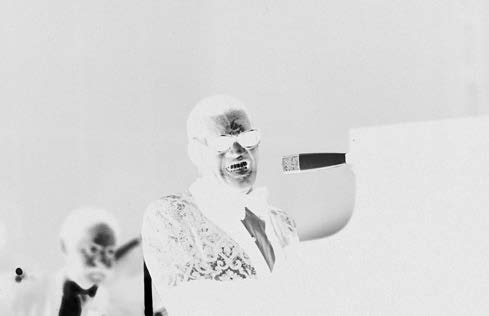
Figure 8.8 | Ray Charles
Author | Heinrich Klaffs
Source | Wikimedia Commons
License | CC BY-SA 2.0
Ray Charles – "Hit the Road Jack"
https://www.youtube.com/watch?v=Q8Tiz6INF7I&list=PL4417733726B17DBF"Contemporary R&B" generally refers to music with jazz, gospel, and funk roots that uses electronic instruments, drums, horns, and vocals. This Earth, Wind & Fire example of contemporary R&B includes a rock rhythm section, brass, and synthesizer—plus a great groove. Many other excellent examples exist from groups like Kool and the Gang and The Ohio Players.
Earth, Wind &Amp; Fire – "In the Stone"
https://www.youtube.com/watch?v=rNNaK0hSkrAEarly rock and roll grew directly out of the tradition of rhythm and blues. The term "rock and roll" is widely credited to the disk jockey Alan Freed, who used it to describe the R&B records he played on Cleveland's WJW radio station. Rock and Roll was marketed and consumed primarily by a teenage audience. Eventually, the term "rock and roll" was shortened to "rock" and evolved into an all-encompassing international music with a wide variety of subgenres such as glam rock, heavy metal, new wave and grunge. The cultural impact of rock and roll has been massive, influencing almost every facet of popular culture, from fashion to language.
Although early rock and roll bands often featured a variety of wind instruments such as the saxophone, by the 1950s, the typical rock and roll band was defined by the electric guitar. Invented in 1931, the instrument used an electronic device called a pickup to convert the vibration of the strings into electronic signals run to a speaker. The earliest electric guitars were merely used as a means of amplification, but rock and roll guitarists began to experiment with various effects, such as distortion that would alter the sound of the instrument.
A typical rock and roll band often included two guitarists. One guitarist typically played "rhythm guitar," which mean supporting the band by strumming the chords of the song. The second guitarist played "lead guitar, which meant playing solos in between the vocal lines or in open solo sections. These two guitarists were backed by a drum set and a bass. Often, one of the guitarists doubled as the lead vocalist, while other members might sing background harmonies.
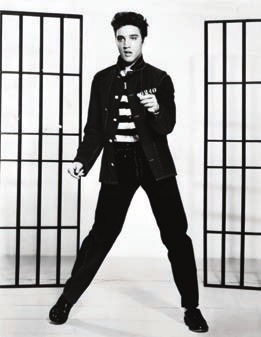
Figure 8.9 | Elvis Presley
Author | Metro-Goldwyn-Mayer, Inc.
Source | Wikimedia Commons
License | Public Domain
Like R&B, rock and roll music places a strong emphasis on the backbeat. These accents are very notice-able in Chuck Berry's "rock and roll music," which features snare drum accents on beats two and four.
Chuck Berry – "Rock and Roll Music"
https://www.youtube.com/watch?v=0XSaKQlBZuEElvis Presley was one of the most important figures in the history of rock and roll, and one of the most celebrated recording artists of the twentieth century. He was born in Tupelo, Mississippi but grew up in Memphis, Tennessee. His recording career began in Memphis in 1954 when he worked with Sam Phillips, the owner of Sun Records. Elvis combined the sounds of country music and rhythm and blues into a style that was initially called rock-abilly. Elvis soon moved to the RCA label, and his first single record "Heartbreak Hotel," released in 1956, became the number one hit in the United States. By embracing music from both sides of the civil rights movement, Elvis became both very popular and very controversial at the same time. In many ways, he helped bring the popular music of African Americans into the mainstream of white society and paved the way for groups like the Beatles and the Rolling Stones, who were heavily influenced by black artists. Elvis later branched out and recorded many successful ballads and rock tunes. He died of a drug overdose in 1977.
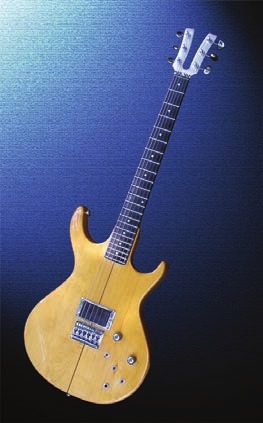
Figure 8.10 | Electric guitar, solidbody, Kramer XKG-20 circa 1980
Author | User "BellwetherToday"
Source | Wikimedia Commons
License | CC BY-SA 4.0
Listen to the blues influence in Elvis's singing and the guitar and piano solos in "Heartbreak Hotel."
Listening Guide
For audio, go to: https://www.youtube.com/watch?v=e9BLw4W5KU8One of the most famous rock and roll groups of all time was The Beatles. This British group toured the United States in 1964 and changed the face of popular music and the recording industry from that time forward. The Beatles popularized the use of electric guitars as the basis of the modern rock band and went on to add strings, brass, organ, and other instruments to the list of instruments used in rock performances and recordings. Their use of straight eighth notes on the cymbals and accents on beats two and four on the snare drum are classic rock and roll rhythm elements. Most Americans are unaware of the influence that Chuck Berry and other American artists had on the style and content of the Beatles' music.
The Beatles – "I Want to Hold Your Hand"
https://www.youtube.com/watch?v=o1_zdt_FNmM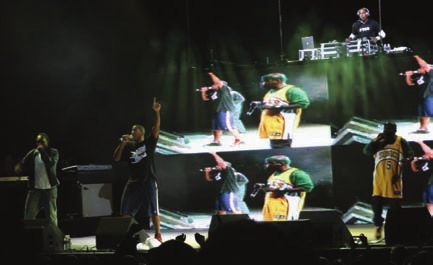
Rap is a form of spoken word delivered over a beat. It can be improvised or written out in advance. The history of rap music is intertwined with the history of hip hop and even disco music. An excellent history of hip hop and rap can be found on the Hiphop-Network site linked below.
http://www.hiphop-network.com/articles/general/kurtisblowversionofhiphop.aspWhile the origins of rap can be traced back to Africa, rap as we know it came into being in the Bronx, NY in the 1970s. However, not until the art form was recorded did it enter the cultural mainstream. One of the first important rap recordings was the 1979 hit, "Rapper's Delight" by the Sugarhill Gang. Kurtis Blow (Kurt Walker, born August 9, 1959) is the first rapper to sign with a major record label. "The Breaks," a single from his 1980 debut album, is the first certified gold record rap song.
Kurtis Blow — "The Breaks" (1980)
https://www.youtube.com/watch?v=MAk2wlv1N1IBy the 1990s, rap had evolved into a more sophisticated musical style featuring complex rhythms and clever wordplay. The instrumentation of rap music varies greatly depending on the artist and, often, the individual song. Early rap concerts featured DJs creating beats on turntables, which allowed the DJ to create music on the spot by playing and manipulating records. One well-known technique on the turntables is scratching, or improvising a rhythmic solo on one turntable over a beat.
Figure 8.11 | A Tribe Called Quest
Author | James Chutter
Source | Wikimedia Commons
License | CC BY 2.0
A Tribe Called Quest is widely considered one of the greatest groups of the socalled golden age of hip hop during the late 1980s and early 1990s. Listen to the track below, "Can I Kick It" by A Tribe Called Quest. Like many rap songs, this track utilizes a technique called "sampling," in which a clip of a preexisting song is isolated and looped underneath the rapper (in this case, the bass line for Lou Reed's Walk On The Wild Side). The song also features the use of scratching mentioned above.
Listening Guide
For audio, go to: https://www.youtube.com/watch?v=71ubKHzujy8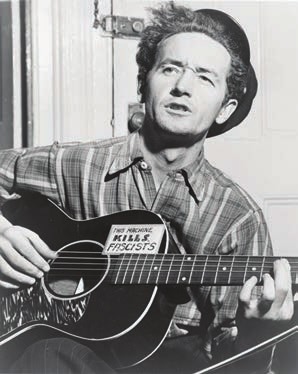 0:50
Phife Dawg
Hook:Can I kick it? Can I kick it?Can I kick it? Yes you canCan I kick it? Yes you canCan I kick it? Yes you canCan I kick it? Yes you canCan I kick it? Yes you canCan I kick it? Yes you canCan I kick it? Yes you canWell I'm gone, gone
0:50
Phife Dawg
Hook:Can I kick it? Can I kick it?Can I kick it? Yes you canCan I kick it? Yes you canCan I kick it? Yes you canCan I kick it? Yes you canCan I kick it? Yes you canCan I kick it? Yes you canCan I kick it? Yes you canWell I'm gone, gone
Folk music is a broad term used to describe a wide variety of musical forms that developed within different cultures, often for different rea-sons. American folk music varies widely depending on the region, but most American folk music was influenced by the European and African cultures from which many Americans descended. We will explore some of the more popular forms of folk music and folk-inspired music. Folk music in America largely developed from a combination of music from the British Isles and other European regions and music brought here by African slaves. Folk music often uses the form known as the ballad. Ballads most often tell a story that usually contains a moral or lesson. Listen to this recording of the Scottish/English ballad "Barbara Allen."
Figure 8.12 | Woody Guthrie
Author | Al Aumuller
Source | Wikimedia Commons
License | Public Domain
joan Baez performing "Barbara Allen"
https://www.youtube.com/watch?v=NqHJ4V893e0Work songs often helped groups of people (including slaves) perform physical work. The music usually uses the tempo of the work itself and was sung by lumberjacks, railroad workers, and prison chain gangs, among others.
Listen to this recording of a Texas prison chain gang singing "Let the Hammer Reign" as they chop down trees. This piece is very similar to how slaves would sing while working on Southern plantations. Its compositional and style traits include the following: it uses a "Call and Response" technique, where a lead singer sings a line and then the group follows him with their response; it uses a simple melody; its instrumentation is only vocal; it possesses thicker texture (several singers); its tempo is constant and matched to the speed of the axes; and its dynamics are fairly constant.
Prison chain gang – "let the hammer reign" https://www.youtube.com/watch?v=wFSlw8LlIw0Children's songs also have a purpose, usually to teach a simple lesson. They are, therefore, simple to sing and easy to remember. In the case of "ABC Song," its lesson helped children remember the twenty-six letters of the alphabet.
The "abC song" https://www.youtube.com/watch?v=75p-N9YKqNoProtest songs are written to directly, or by suggestion, voice complaints about some injustice. Listen to Bob Dylan perform his composition "Blowin' in the Wind," a protest song written in the 1970s to indirectly protest social injustice and the Vietnam War. Its compositional and stylistic elements include the following: it uses the same music for each verse, its melody is simple, its instrumentation is voice and guitar, its texture is thin, and its tempo and dynamics are constant.
Bob Dylan – "Blowin' in the Wind"
https://www.youtube.com/watch?v=3l4nVByCL44Dance music is folk music written for dancing. It's that simple! The instrumentation of various types of folk dance music varies with the style. Acoustic instruments were used before the 1950s simply because electric and electronic instruments didn't yet exist. Its compositional and stylistic components include the following: the form is almost always a repeating form; sometimes dance music comprises song with words while at other times, it is just instrumental; its form is almost always a repeating form; the dynamics are usually loud in order to be heard in a dance hall or other large space.
Below are links to three examples of different dance forms: a two-step, a waltz, and a square dance.
gil Tanner &Amp; The Skillet Lickers, "Soldiers Joy"
https://www.youtube.com/watch?v=vd54F6bVvwo Country WaltzErnest Tubb, "Waltz Across Texas"
https://www.youtube.com/watch?v=hK_qrg4Jz20 square danceThe Chuckwagen Team, "Golden Reel"
https://www.youtube.com/watch?v=i0zVE1ICidc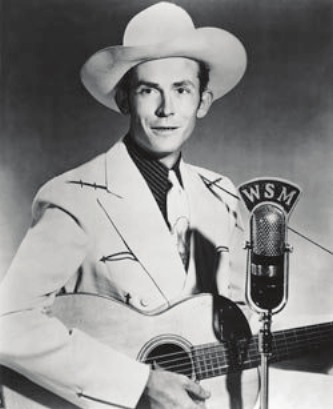
Figure 8.13 | Hank Williams
Author | WSM radio
Source | Wikimedia Commons
License | Public Domain
Bluegrass music is a variation of country music that developed largely in the Appalachian region; it features fiddle, guitar, mandolin, bass guitar, and the five-string banjo. Often associated with Appalachia, bluegrass combines many of the song forms that are common in the region's Scottish/English musical heritage. For example, bluegrass blends the Scottish/English ballad with blues inflections. Some bluegrass songs are fast instrumental pieces featuring amazing technique by the performers. Listen to Ricky Skaggs and the Bluegrass Thunder perform via the link below.
Ricky Skaggs, "Bluegrass Breakdown" https://www.youtube.com/watch?v=oZIHSXpmilw
Hillbilly music was an alternative to the jazz and dance music of the 1920s. It was portrayed as wholesome and as the music of the "good old days." Nashville's Grand Ole Opry radio show became a very successful weekly network radio broad-cast heard nationwide. Noticing an opportunity, record companies soon opened offices in Nashville. Country music became a source of big money for producers, song writers, and artists.
The Hillbillies – "Cluck Old Hen" 1927
http://www.youtube.com/watch?v=qizwcdHAWNU
Honky-tonk music developed as Hillbilly music went west to entertain in saloons called "honky tonks." Many of the songs dealt with subjects associated with honky tonks, such as infidelity and drinking. Although the first use of the term "honky tonk" referred to a ragtime-like piano style, it later came to refer to a country combo style that became quite popular in the 1940s and 1950s. Duane Eddy's combo example of the honky-tonk style shows a more modern variation of honky-tonk:
Hank Williams – "Honky Tonkin'" 1948
https://www.youtube.com/watch?v=88XvpkHS4UE
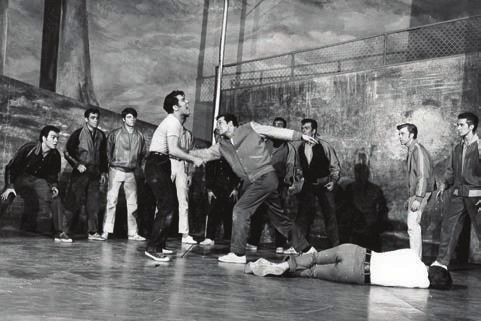
Western Music refers to music composed about the Great American West, such as the cowboy songs heard in movies of the 1930s and 1940s by singers such as Gene Autry and Roy Rogers.
One variation of this genre, Western swing, developed in Austin, Texas and other western cities and borrowed instruments from the dance band (saxophones, trombones, trumpets, piano, bass, and drums).
Mitch Ballard &Amp; The Western Swing Machine, "Ace in the Hole"
https://www.youtube.com/watch?v=TQawiRq-QDk Contemporary country music has become a mixture of rock rhythm sections and a singer singing with a country accent about many of the same topics that traditional country singers have used over the decades. Contemporary country artists often use electric guitars, electric steel guitar, electric bass, keyboards (often synthesizers), and drum set. Country music is still big business, selling millions of units per year. Watch and listen to the Carrie Underwood and Miranda Lambert performance linked below:Carrie Underwood and Miranda Lambert, "Something Bad"
https://www.youtube.com/watch?v=9RfT2KqPCoI
Although music has been part of dramatic performances at least as far back as ancient Greece, American musical theatre has its own unique style, which developed from several earlier forms. The term musical theatre refers to a type of dramatic performance that tells a story through dialogue, with singing and dancing added to support and move the plot along. This differs from opera, which is presented purely through song, without any spoken word.
One precursor to modern musical theatre is the minstrel show. The first distinctly American form of theatre, minstrelsy was developed in the nineteenth century and featured white performers in blackface performing in a variety show of sorts. These three-act shows featured stock characters singing songs, performing in skits, and telling jokes. They often depicted black characters as happy participants in romanticized versions of the American slave south. One of the most well-known songwriters of minstrel music was Stephen Foster. Listen to his song Camptown Races, which depicts a group of men in a "camp town" (a community of transients) who bet on horses to try to make money.
Figure 8.14 | West Side Story
Author | Fred Fehl
Source | Wikimedia Commons
License | Public Domain
Stephen Foster – "Camptown Races" (Sung by Al Jolson)
https://www.youtube.com/watch?v=_tuu5YtkPIo Foster was one of the first Americans to make a living as a professional songwriter, a feat which would become common in the twentieth century. Minstrelsy continued into the twentieth century and eventually evolved into other forms such as vaudeville, which featured variety shows with music, comedy, and talent acts. Although minstrelsy is now regarded by many as a remnant of the racism of the past, it was responsible for many songs that are still part of our repertory.Operetta evolved in Europe in the middle of the nineteenth century and grew out of the French opéra comique tradition. An operetta can be characterized as "light opera" in which the focus is the music, but with less complex music than opera. Although not as technically demanding as opera, operettas typically required the use of classically trained singers. The operetta was popularized in America most famously by Victor Herbert, who wrote works at the beginning of the twentieth century. Operetta is important as a direct precursor to modern musical theatre. Listen to Victor Herbert's "Ah Sweet Mystery of Life" from Naughty Marietta.
victor Herbert – "Ah Sweet Mystery of Life" From Naughty Marietta.
https://www.youtube.com/watch?v=1xpKeabZlEsDuring the twentieth century, the operetta slowly gave way to a more cut-and-dry, vernacular American musical theatre style, which continues today. Modern musical theatre (also known as the Broadway musical) integrated a cohesive plot with songs and dances that advanced that plot. This more direct musical style reflected the American audiences of the twentieth century, who were less interested in the formal, Victorian style of the operetta.
Musicals are stage shows with music, acting, costumes, sets, and dance. They are closely related to opera and are an American art form, though they are also pop-ular in parts of Europe. Some successful musicals were later turned into movies. Musicals usually use a full Romantic orchestra and often add synthesizer sounds as well. Listen to and watch the following segment from one of the most successful musical productions in Broadway history.
Phantom of the Opera — "All I Ask of You"
https://www.youtube.com/watch?v=uxs7qevmy50The first half of the twentieth century marked the heyday of the Broadway musical, with shows like Oklahoma!, South Pacific, and The Sound of Music among many others. Broadway refers to the main thoroughfare in midtown Manhattan that serves as the theater district for New York City. To this day, it is considered the highest level of musical theatre in the United States and is home to the most popular shows in the country. Composers such as Cole Porter, Richard Rodgers, Oscar Hammerstein, and Irving Berlin composed hundreds of tunes for Broad-way shows that are now considered American classics. Listen to the examples below from Rogers and Hammerstein's Oklahoma! from 1943.
Rodgers and Hammerstein – Oklahoma!
https://www.youtube.com/watch?v=_C6J9gij5SQ
Listen to the example below of West Side Story from 1957, written by Leonard Bernstein. Bernstein, who was conductor of the New York Philharmonic, composed West Side Story as a depiction of Romeo and Juliet set in New York City. The musical dramatized the tensions between white and Puerto Rican street gangs, and updated the famous Shakespeare story for twentieth-century audiences. The music was also groundbreaking for its sophistication, use of modern harmonies, and incorporation of Latin music and jazz.
| Listening Guide | |
|---|---|
| Composer | Leonard Bernstein |
| Composition | "America" from West Side Story |
| Date | 1957 |
| Genre | Broadway Musical |
| Form | Verse-chorus |
| Nature of Text | The Puerto-Rican characters lament on the dream of living as an immigrant in America versus the reality. |
| Performing Forces | Orchestra with solo vocals and chorus |
| What we want you to remember about this composition | |
Although not a true opera in the strict sense, George Gershwin's "folk opera" Porgy and Bess is considered one of the great American operatic works of the century. The story is set in a tenement in Charleston, South Carolina. Based on DuBose Heyward's novel Porgy, the opera incorporated classically trained black singers to depict the tragic love story between the two main title characters. Gersh-win based the music for the opera on elements of folk music, drawing on southern black musical style such as the blues and spirituals. Drawing on the nineteenth century opera tradition, Gershwin made use of leitmotifs to represent people or places. Near the beginning of the opera, we hear the famous aria "Summertime," which depicts the hot, hazy atmosphere in which the story is set.
George Gershwin – "summertime"